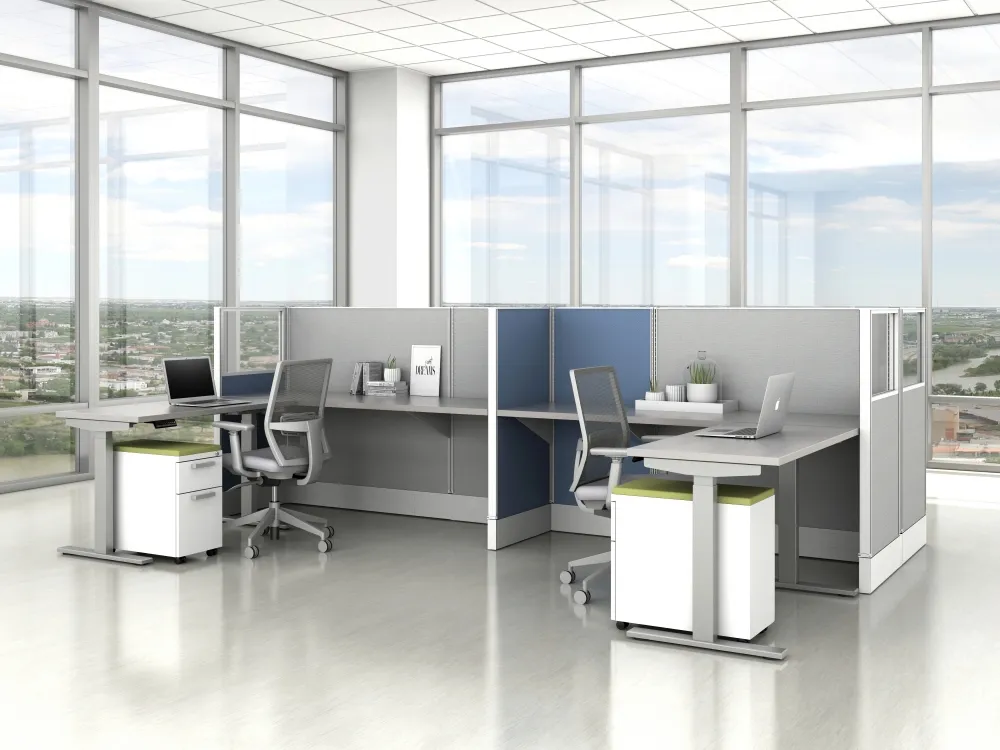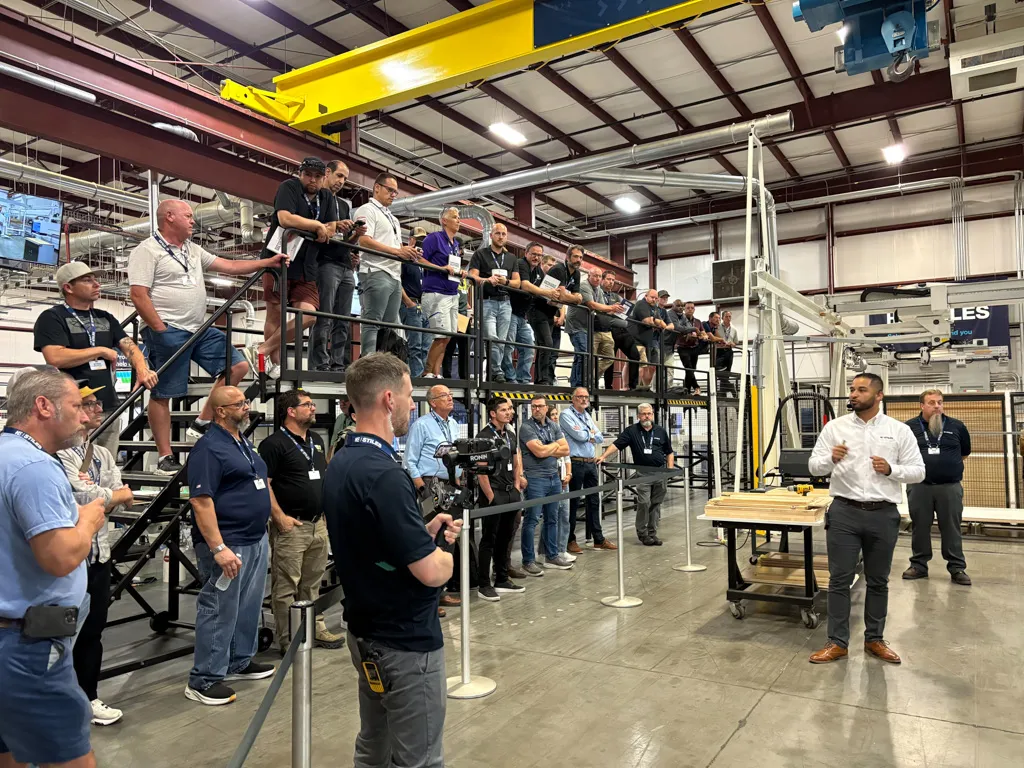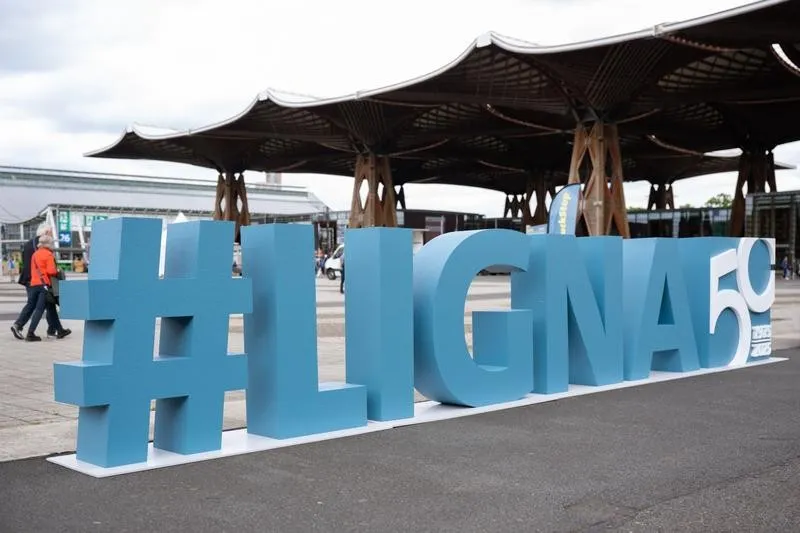Table of Contents
Commercial office furniture manufacturer bets on growth by investing in a new factory, panel processing technology
The fast-growing manufacturer of laminate casework, panel systems, and other office furnishings is content to let its bigger competitors invest tall dollars in speculative product development. It prefers to wait and see which workplace trends gain traction and then pounce on the opportunity by designing products it can quickly bring to market.
“It’s hard to predict the future, and to a certain extent, we choose not to,” said Bill Stewich, executive vice president of design and product development for AIS. “Instead, we try to be as efficient as possible with our product design development to bring a product to market within a year. Everyone in our engineering department is proficient at creating 3D models. We go right from models to machines, so we don’t have a lag in the middle doing engineering drawings and that kind of thing.”
Stewich pointed to Calibrate Community, an open-plan laminate desk system introduced at NeoCon 2018, as the most recent example of the company’s fast-track product development capability.
“I was able to conceptualize the requirements for this product line based on special requests we received from interior designers and architects at the start of this year,” Stewich said. “We’ll begin shipping product in the first quarter of 2019.”
‘New factory is our advantage’
In 2015, AIS Furniture began consolidating its operations spread out at five different locations into a 588,000-square-foot facility in Leominster, Massachusetts, the long-shuttered former home of Tucker Plastics. Central to the move, AIS mightily invested in panel processing equipment—mostly from Stiles Machinery—to produce its laminate case goods and other wood-composite-based products. The company had previously outsourced production of its laminate casework to other manufacturers.
AIS also added a metal powder coating line to bolster seating production and installed solar panels edge-to-edge on the building’s roof. Electrical power not consumed by AIS is returned to the grid, Stewich said.
Embracing new technology and instilling a culture of lean manufacturing and continuous improvement to manufacture modularly designed laminate case goods allows AIS to achieve three-week turnarounds.
“The new factory is our advantage,” Stewich said. “It starts with the technology. We use IMOS, SolidWorks, and woodCAD|CAM software for our calibration laminate lines. Because we had no legacy products, we could set up a very efficient system using the latest technology capable of manufacturing production that is also very flexible for custom. We can stretch products, add shelves, and do all sorts of other things our customers request.”
“Designing for manufacturing is a big part of what we do,” Stewich added. “We universalize products maybe a lot more than the other manufacturers do. We can use the same pedestal in our different laminate case goods lines instead of having more for manufacturing. The variety and the speed with which we can design and manufacture products using this very consistent product is what our customers are requiring right now.”
“The market is not demanding highly stylized products at the moment,” said Tracy Reed, vice president of marketing for AIS. “We’re not seeing a ton of curves happening. People are going for a more straightforward aesthetic. So, we have found that this idea of being super-simplified and quasi-universal and giving people enough options through dimensionality, material, color, texture, and pull designs is our sweet spot.
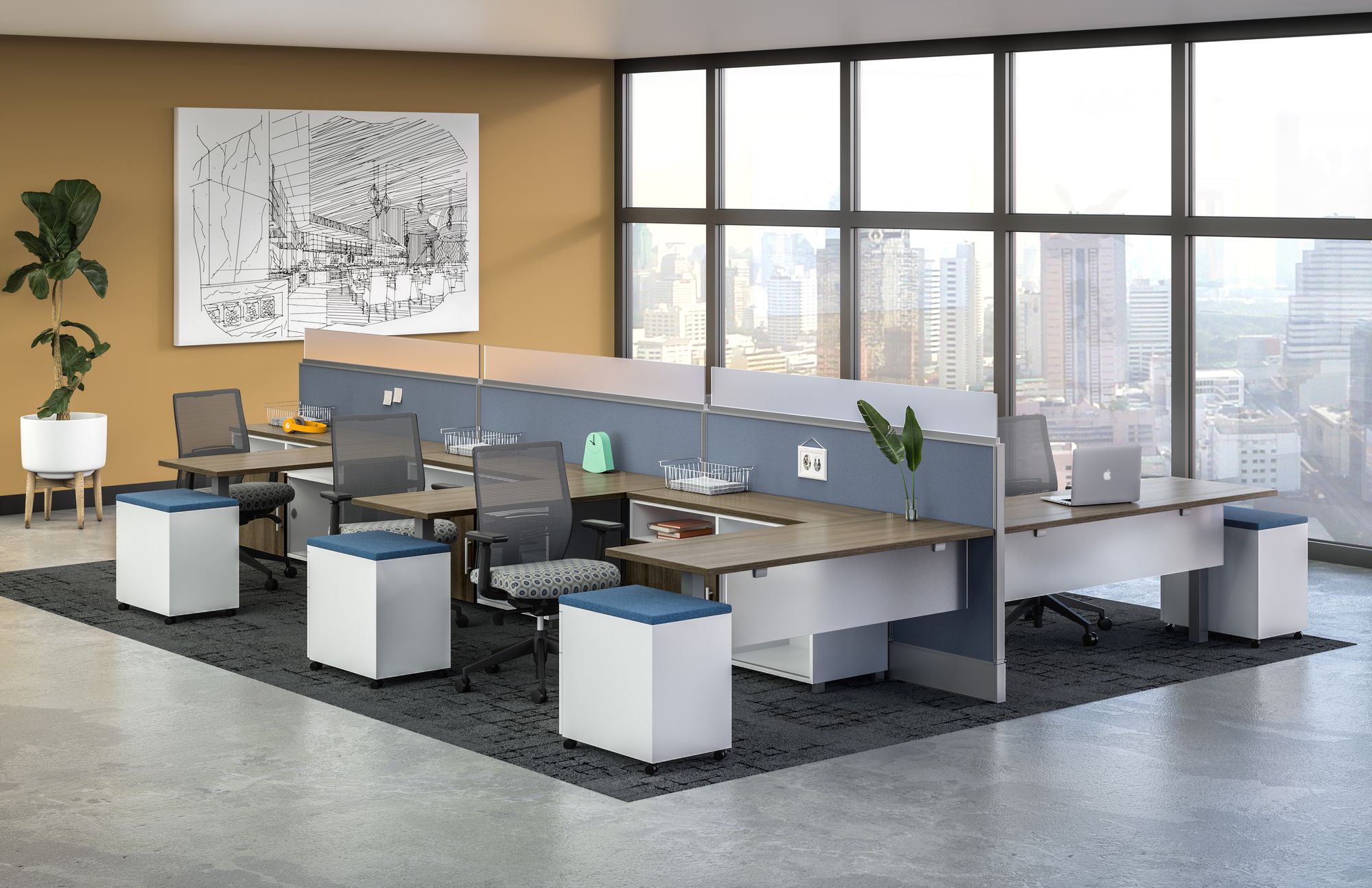
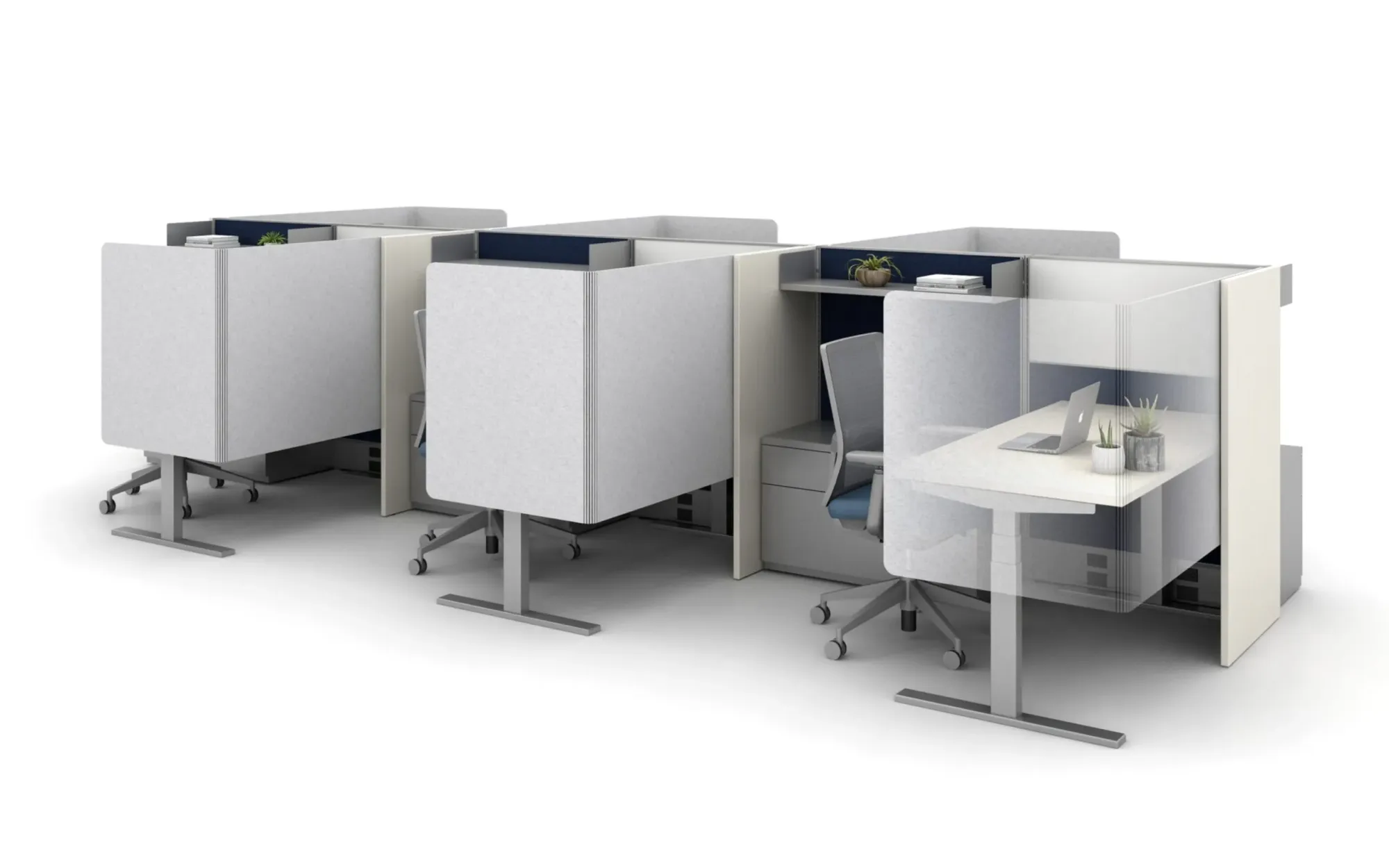
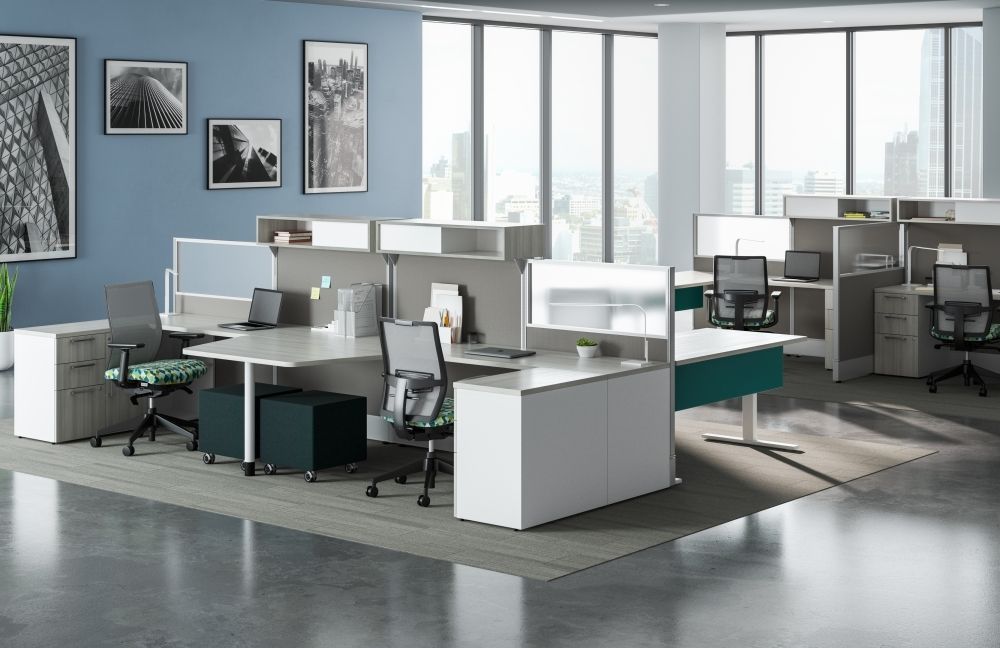
Preparing to launch
AIS plans to officially roll out its new Calibrate Community line in early 2019, which coincides with the company’s 30th anniversary. It will be available in the company’s palette of approximately 20 TFL woodgrains and colors. The products feature quarter-turn fastener construction using assembly fittings from Hafele and Hettich. “We chose to use quarter-turn fittings because they provide a tremendous amount of flexibility and, quite frankly, are stronger than glue and dowels,” Stewich said.
“The move toward simplicity in office furniture is something that everybody is striving for,” Stewich said. “I think it went a little too far about five years ago when everybody was just getting a table and a chair. Designers, facility managers, and clients ignored what the workers wanted – privacy and acoustics.
“What we have seen now has been a return to something more substantial. The open-plan workers want a modicum of privacy. They want ultra-privacy when needed, such as to call their doctor. They need to collaborate, but they also need a heads-down workspace. Each worker needs all of these things during the day. He needs multiple environments to be productive.
“We’re trying to focus on providing those in the simplest and most adaptable ways possible,” Stewich added. “Moveable tables, screens, and other products can be rearranged without tools. The thing that continues to drive what we do in space design is electrical and data distribution. Wireless technology has changed that environment, but you must still provide multi-circuit electrical to the open plan.”
Stewich noted that the paperless office is another critical trend influencing furniture design. “Instead of holding paper, workers need personal storage for laptops, bookcases, CPUs, etc. That whole shift in storage is one of the things driving the use of laminates today. There has been an explosion in the use of this product in the industry in the last four years.”
Stewich said that while AIS uses HPL from Wilsonart and Panolam in many of its products, its standards are set by 3/4- and 1-inch TFL panels mainly supplied by Panolam and Tafisa. This includes worksurfaces, once the exclusive domain of HPL.
“TFL has come a long way over the last five years in terms of quality, durability, and the variety of colors offered,” Stewich noted. “At least half of the worksurfaces we sell are TFL, but we can only afford to stock our most popular designs. HPL allows us to expand our color palette because there are hundreds and hundreds of colors that you can get in four days from several suppliers. Of course, we also work with many designers who require HPL in their specs.”
AIS offers TFL in six different textures. “The resolution of the patterns like quarter cut or cathedral is so great that you honestly cannot tell the difference between it and wood veneer other than the price. It’s fantastic.”
AIS built its business on making panel systems, which remain a big part of its business, Stewich said. The company also offers metal storage systems that it outsources.
“We still offer an excellent line of metal products that we stretch as much as possible into the various markets that we play in, but we are certainly doing much more development these days in laminate casework than we are for metal.”
Growing strong
AIS’s commitment to expanding its manufacturing base has paid off big-time. Since moving into the Leominster facility, AIS has grown more than 20 percent and is pushing toward $200 million in annual sales. As sales of laminate case goods have doubled, a third-panel processing line was installed. The company has also added 175 jobs, bringing its headcount to more than 750, and still more workers are needed to operate its two shifts.
Investment has also been made in its showrooms. In addition to the one in its new Leominster facility, AIS has renovated its galleries in Washington, DC, New York City, and Chicago.
“As we evolved into what we are now, we want to be the most successful mid-market, big contract manufacturer in the office furniture industry,” Stewich said. “That requires expanding our products into various markets. So developing seating products has been one of our big focuses over the last few years. The ability to manufacture our laminate case goods has been another component, and we offer various pre-packaged products like tables, as opposed to selling worksurfaces and legs. Our dealers can now look to us for just about anything they might need.”


